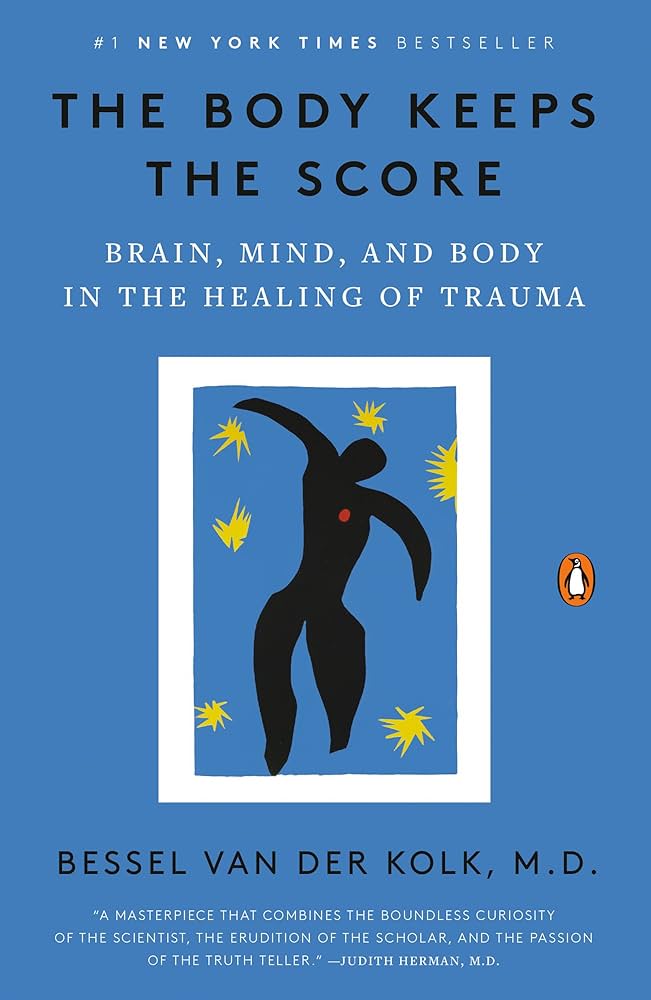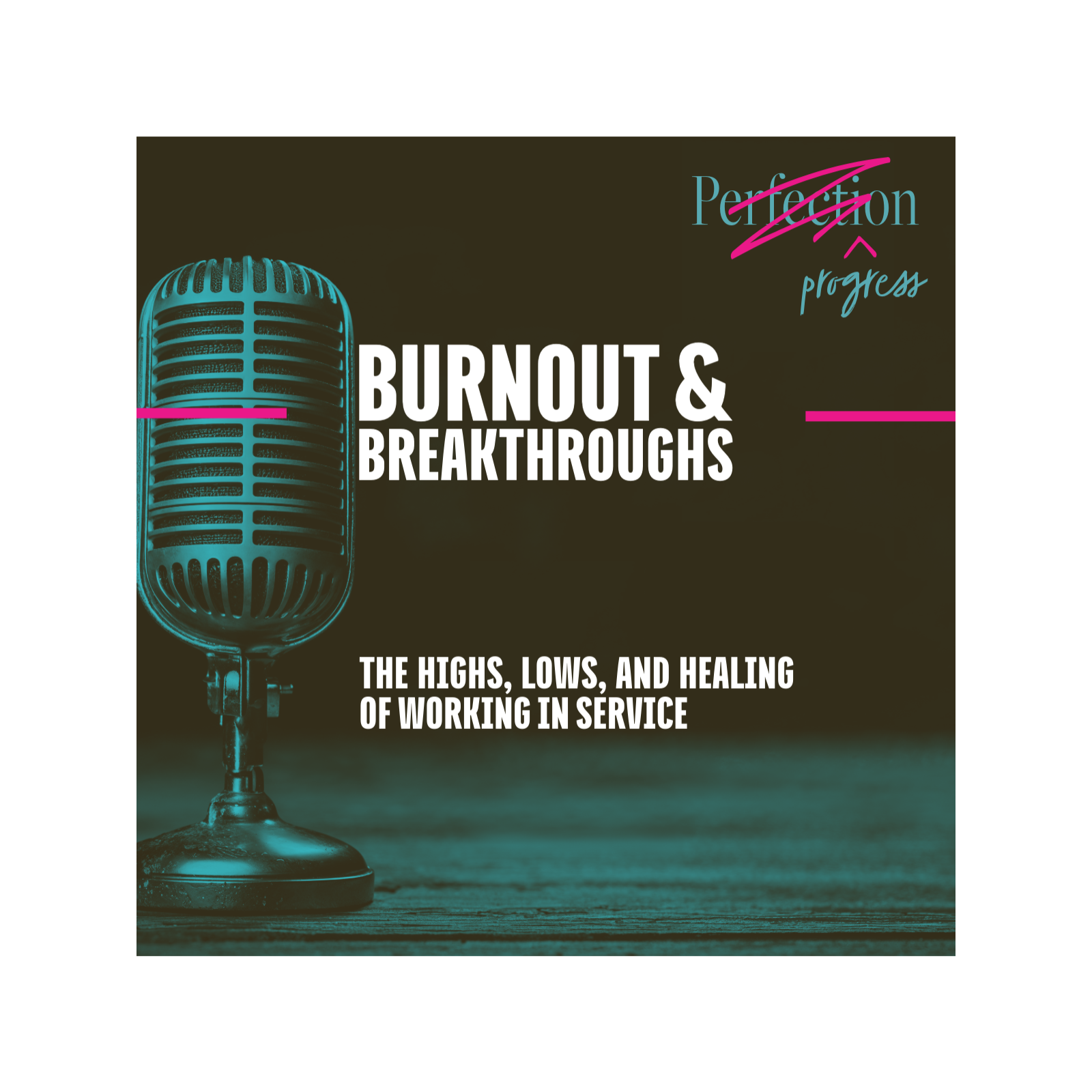Decoding the Body's Response to Nonprofit Stress: Lessons from 'The Body Keeps the Score'

Welcome to the Burnout & Breakthroughs Blog! In this post, we're diving deep into a topic that's incredibly important, especially for those of us working in the nonprofit sector: the impact of stress and trauma on our bodies. Drawing insights from Bessel van der Kolk's groundbreaking book, 'The Body Keeps the Score,' we'll explore how chronic stress manifests physically and emotionally, particularly within the demanding context of nonprofit work. We'll also discuss practical strategies for healing and prevention. This blog post is designed to expand on the themes discussed in my latest podcast episode, Burnout Isn’t a Badge of Honor, where we debunked the myths that keep nonprofit workers stuck in cycles of burnout. Be sure to check it out for additional perspectives and actionable advice.
The Unspoken Truth of Nonprofit Work
Working in the nonprofit sector often feels like running a marathon at a sprint pace. We’re driven by passion, fueled by a desire to make a difference, and often operating with limited resources. While the rewards can be immense, the challenges are equally significant. Long hours, emotional labor, constant fundraising pressures, and the weight of the issues we’re tackling can take a serious toll. But how often do we truly acknowledge this toll, let alone address it effectively? The unspoken truth is that nonprofit work, while deeply meaningful, can also be profoundly stressful, leading to burnout and, ultimately, impacting our physical and mental well-being.
The Body's Silent Language: How Stress Manifests
Our bodies are incredibly wise. They’re constantly communicating with us, sending signals about our physical and emotional state. But how often do we actually listen? Stress doesn’t just live in our minds; it manifests in our bodies in tangible ways. Think about the last time you felt overwhelmed. Did you experience a tight neck, a clenched jaw, or a knot in your stomach? These are all physical manifestations of stress. Chronic stress can lead to more serious health issues, including digestive problems, headaches, sleep disturbances, a weakened immune system, and even cardiovascular problems. It’s crucial to recognize these signals and understand that they’re not just random aches and pains; they’re your body’s way of telling you something needs to change.
Insights from 'The Body Keeps the Score'
Bessel van der Kolk's 'The Body Keeps the Score' offers a profound understanding of how trauma and stress affect the brain and body. Van der Kolk argues that traumatic experiences are not just memories stored in our minds; they're imprinted on our nervous systems, shaping our emotional responses, behaviors, and even our physical health. The book highlights the importance of somatic therapies – approaches that focus on healing the body – in addressing the lingering effects of trauma. These therapies, such as yoga, mindfulness, and EMDR (Eye Movement Desensitization and Reprocessing), can help individuals reconnect with their bodies, regulate their emotions, and ultimately, heal from the inside out. In the context of nonprofit work, understanding these principles is crucial for addressing the chronic stress and vicarious trauma that many professionals experience.
Why Nonprofit Workers Are Particularly Vulnerable
Nonprofit workers face a unique set of stressors that make them particularly vulnerable to burnout and its associated physical and emotional consequences. First, there's the emotional labor. We're constantly dealing with difficult situations, listening to heartbreaking stories, and advocating for vulnerable populations. This can lead to compassion fatigue, a state of emotional and physical exhaustion caused by prolonged exposure to suffering. Second, there's the pressure to do more with less. Nonprofits often operate on tight budgets, which means staff members are often stretched thin, taking on multiple roles and working long hours. Third, there's the inherent difficulty of the work itself. We're often tackling complex social problems that have no easy solutions, which can lead to feelings of frustration, helplessness, and even despair. Finally, the culture of self-sacrifice that often pervades the nonprofit sector can discourage self-care and perpetuate a cycle of burnout.
Debunking the Myths: Self-Sacrifice and the Burnout Badge of Honor
One of the most harmful myths in the nonprofit sector is the idea that self-sacrifice is a virtue. We're often told that we should be willing to go above and beyond, to put the mission before our own needs. While dedication and commitment are certainly important, this mindset can lead to unhealthy boundaries and ultimately, burnout. It's time to debunk the myth that exhaustion equals commitment. Burnout is not a badge of honor; it's a sign that something is seriously wrong. It indicates that we're not taking care of ourselves, that we're not setting healthy boundaries, and that we're not sustainable in our roles. We need to shift the narrative and recognize that self-care is not selfish; it's essential for our well-being and our ability to effectively serve our communities.
The Cost of Silence: Stories from the Trenches
The pressure to maintain a positive image, to appear strong and resilient, can often lead to silence. Nonprofit workers may be hesitant to speak up about their struggles for fear of being perceived as weak, incompetent, or uncommitted. This silence, however, comes at a significant cost. It perpetuates a culture of burnout, prevents individuals from seeking help, and ultimately, undermines the effectiveness of the entire sector. I’ve heard countless stories from nonprofit professionals who have suffered in silence, battling chronic stress, anxiety, and depression, all while trying to maintain a facade of strength. These stories highlight the urgent need for greater awareness, open communication, and supportive resources within the nonprofit community.
Practical Strategies for Healing and Prevention
So, what can we do to address the impact of stress and trauma on our bodies and prevent burnout? Here are some practical strategies for healing and prevention:
- Acknowledge and Validate Your Feelings: The first step is to acknowledge that your feelings are valid. It's okay to feel stressed, overwhelmed, or even traumatized by your work. Don't try to suppress your emotions; instead, allow yourself to feel them, process them, and learn from them.
- Prioritize Self-Care: Self-care is not a luxury; it's a necessity. Make time for activities that nourish your mind, body, and soul. This could include exercise, meditation, spending time in nature, reading a book, or simply taking a relaxing bath.
- Set Healthy Boundaries: Learn to say "no" to requests that are beyond your capacity. It's important to protect your time and energy and to prioritize your own well-being.
- Seek Support: Don't be afraid to reach out to others for support. Talk to your colleagues, supervisors, friends, or family members about your struggles. Consider joining a support group or seeking professional counseling.
- Practice Mindfulness: Mindfulness techniques, such as meditation and deep breathing exercises, can help you become more aware of your thoughts and feelings and to regulate your emotional responses.
- Engage in Somatic Therapies: Explore somatic therapies, such as yoga, massage, or EMDR, to help you reconnect with your body and heal from the effects of trauma.
- Advocate for Organizational Change: Encourage your organization to prioritize employee well-being by implementing policies and practices that promote self-care, work-life balance, and a supportive work environment.
Reclaiming Your Body: Simple Exercises for Stress Relief
Reconnecting with your body is a crucial step in healing from stress and trauma. Here are some simple exercises you can incorporate into your daily routine:
- Deep Breathing: Take a few minutes each day to practice deep breathing exercises. Inhale deeply through your nose, filling your lungs with air, and exhale slowly through your mouth. This can help calm your nervous system and reduce feelings of anxiety.
- Body Scan Meditation: Lie down or sit comfortably and bring your attention to different parts of your body, noticing any sensations you may be experiencing. This can help you become more aware of your body and to release tension.
- Gentle Stretching: Engage in gentle stretching exercises to release tension in your muscles. Focus on areas where you tend to hold stress, such as your neck, shoulders, and back.
- Yoga: Practice yoga to improve your flexibility, strength, and balance, while also promoting relaxation and stress relief.
- Walking in Nature: Spend time outdoors, walking in nature. The fresh air, sunshine, and natural surroundings can help reduce stress and improve your mood.
Setting Boundaries: Saying 'No' to Protect Your Well-being
Learning to say "no" is essential for protecting your well-being and preventing burnout. It's okay to decline requests that are beyond your capacity or that don't align with your priorities. Here are some tips for setting healthy boundaries:
- Know Your Limits: Be clear about your limits and what you're willing to do.
- Communicate Clearly: Communicate your boundaries clearly and assertively.
- Be Consistent: Be consistent in enforcing your boundaries.
- Don't Apologize: You don't need to apologize for saying "no."
- Prioritize Your Needs: Remember that your needs are important, too.
The Importance of Community and Support
Building a strong community of support is crucial for navigating the challenges of nonprofit work. Connecting with others who understand your experiences can provide validation, encouragement, and practical advice. Here are some ways to build community and find support:
- Connect with Colleagues: Build relationships with your colleagues and create a supportive work environment.
- Join a Professional Organization: Join a professional organization for nonprofit workers to connect with peers and access resources.
- Attend Workshops and Conferences: Attend workshops and conferences to learn new skills and connect with other professionals in the field.
- Seek Mentorship: Find a mentor who can provide guidance and support.
- Join a Support Group: Consider joining a support group for nonprofit workers to share your experiences and receive support from others.
Resources for Further Exploration
Here are some additional resources for further exploration:
- The Body Keeps the Score by Bessel van der Kolk
- Burnout: A Brief History and How to Prevent It - Harvard Business Review piece by Christina Maslach & Michael Leiter
- "Nonprofit Workers Are Stressed, Burned Out, and Leaving" - Stanford Social Innovation Review article by Karen Baird
- Preventing Burnout: A Handbook of Organizational and Personal Strategies by Ayala Pines & Elliott Aronson
- "The Cost of Compassion" - recent research on emotional labor and burnout among nonprofit workers
- The National Council of Nonprofits' overview of the nonprofit workforce shortage crisis
Conclusion: Prioritizing Self-Care for Sustainable Impact
Working in the nonprofit sector is a calling, but it shouldn't come at the expense of our well-being. By understanding how stress and trauma manifest in our bodies, debunking the myths of self-sacrifice, and implementing practical strategies for healing and prevention, we can create a more sustainable and fulfilling work experience. Remember, self-care is not selfish; it's essential for our ability to effectively serve our communities. Just as we advocate for the well-being of others, we must also advocate for our own. Let's prioritize self-care, build supportive communities, and create a culture where well-being is valued and prioritized. And don't forget to listen to the companion podcast episode, Burnout Isn’t a Badge of Honor, for even more insights and practical tips on combating burnout in the nonprofit sector.











